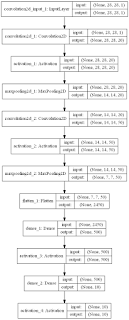TensorFlow, since it has been released just over an year ago, has gained a huge popularity with its capabilities. But the platforms it worked on was limited - there were only pre-packaged Python packages for Linux initially, while it gained a Mac OS compatible version along the way. Windows users were left wondering when (or if) there will be a Windows version of TensorFlow. There has been few unofficial builds for Windows, and some have attempted to build from source for Windows with various degrees of success. But, there was nothing official.
Now, I'm happy to learn that TensorFlow now officially supports Windows. The
release notes suggests that Windows compatibility was present from
TensorFlow v0.12.0 RC0, and it has been tested on
Windows 7,
Windows 10, and
Windows Server 2016. It only supports
64-Bit Python 3.5. Both the standard Python distribution (from
Python.org) and
Anaconda Python are supported.
This was great news for me, since I was switching between Linux and Windows for my machine learning experiments. So, I gave a try to setup TensorFlow on Windows.
I've been using Anaconda Python for most of my experiments, so I created an Anaconda environment - named 'tensorflow' - with all the basic packages I need.
conda create --name tensorflow numpy scipy scikit-learn pillow h5py mingw libpython
Then I activated the environment I just created,
activate tensorflow
Now for the big step, installing TensorFlow from
pip.



